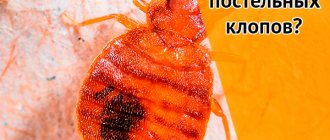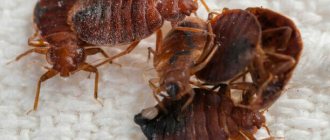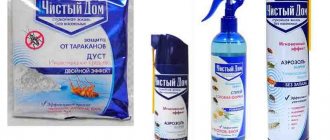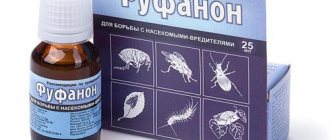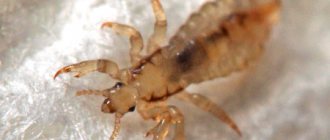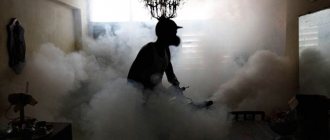The question of how to get rid of bedbugs is periodically asked not only by hotel owners, but also by residents of city apartments. Annoying blood-sucking insects cause a lot of discomfort, interfere with sleep and leave unpleasant red spots on the victim’s body.
In this article we will look at everything you need to know to successfully combat ectoparasites. Dez Group sanitary service specialists will tell you how to get rid of bedbugs at home, and why the cold fog method has long remained one of the most effective disinfestation tools.
Where do bedbugs come from?
Unsanitary conditions are not the main reason for the appearance of blood-sucking ectoparasites in apartments, as many people think. Keeping your home clean does not guarantee protection against bed bugs.
For effective prevention, it is necessary to understand where insects come from and how they enter a person’s home:
- through sewer and water pipes: for this purpose, ectoparasites have hooks, spikes and other devices on their limbs that keep them from falling;
- through ventilation holes;
- together with new or used furniture: if the previous owner’s apartment or store warehouse was infested with bedbugs;
- in a bag, suitcase or along with clothes after a business trip, vacation: parasitic insects are often found in cabins, hostels and economy class hotels.
One of the most common reasons for the invasion of blood-sucking individuals is dysfunctional neighbors. If they do not fight insects, then sooner or later parasites will crawl to you through ventilation, sewers, through window or doorways. This happens when there are too many of them, and the previous volumes of food are no longer enough for them. In a similar way, ectoparasites enter the apartment from the basement, garbage chute and attic.
Not only adult bedbugs, but also larvae with eggs can appear in a living room. For example, if an adult formed a clutch in a bag, clothing or in the wooden joints of a bed, which you then brought into the house.
Bed bugs are often found in hostels, cabins and budget hotels, the owners of which do not monitor sanitary and hygienic conditions. The high risk of blood-sucking ectoparasites is associated with the lack of treatment of premises, irregular and poor-quality cleaning and frequent changes of guests.
Essential oils
Essential oils are used to combat bedbugs. Such products repel pests due to their specific aroma and affect the nervous system of parasites.
Thyme, mint, lavender, clove, and eucalyptus oils are better suited. You can leave 2-3 drops around the perimeter of the rooms, near beds and sofas.
Essential oils are mixed with clean water - 1 tsp. per 100-200 ml of liquid. Then spray from a spray bottle around the room, over bedding and furniture.
You will have to repeat the procedure periodically. You can use more than one oil, but mix it in different combinations with the same parts.
Cedar oil works well. It repels insects and is used to treat bite sites. The product relieves itching, burning, swelling, redness, and accelerates healing.
Lavender oil is used for preventive purposes when traveling. The corners of suitcases are moistened with it to prevent bedbugs from being brought home from hotels and other places.
Where do bedbugs hide?
One of the main difficulties and prerequisites for how to quickly get rid of bedbugs in an apartment on your own is to find all their habitats. If only part of the nests is treated, then the surviving individuals will restore the previous size of the colony in a short period of time. And you will have to start fighting them from the very beginning.
The main places where blood-sucking ectoparasites hide:
- wooden and metal furniture frames;
- seams of upholstered furniture;
- the wrong side of the mattress;
- space behind heating radiators;
- dark closet shelves and corners of rooms;
- space under the baseboard;
- various gaps, cracks and holes in the walls, floor, ceiling;
- socket boxes;
- behind the carpet and wall paintings.
The higher the number of bedbugs, the more places where they live. If you do not stop their reproduction at the initial stage, it will take a lot of time and effort to destroy them.
But detecting parasites when there are few of them is problematic. They lead a secretive lifestyle and leave their nests only at night. If a person does not have a pronounced reaction to a bedbug bite, then the insect will remain unnoticed for a long time and successfully reproduce.
I've been sleeping on an air mattress for a couple of weeks now because of bedbugs.
I threw the sofa in the trash. An absolutely beautiful sofa that was only three years old. There was only one alternative - to remove all the upholstery and find the nests, but it was cheaper to throw it away.
If bedbugs remain in the apartment, they will happily set up a colony in the new sofa (and new sofas can come from the factory with their own bedbugs - this happens). Therefore, a strategic decision was made to buy an air mattress for a while. If parasites are still living in the house, they will almost certainly soon be found under the mattress. But so far they are not visible, and the bites have finally passed. After I threw out the couch, I only caught a couple of bugs in the first two days - perhaps they came from the couch itself while I was tearing it apart and tearfully kicking it to get it into the elevator.
The war lasted all of August and now seems over, but I am not relaxing. A control treatment is planned for the near future - the room will already be devoid of baseboards and linoleum, just to be sure. And only then will I decide to add a new sofa to the house. I wish you never to face this misfortune!
How can you tell if there are bedbugs in your home?
How to quickly remove bedbugs at home? One of the decisive success factors is to detect the appearance of blood-sucking insects as quickly as possible.
The most important sign of their presence is the appearance of bites on the body. After a bedbug attack, itchy red dots form on your arms, cheek, neck, back or legs within a few hours. The fact is that the insect bites the victim several times and drinks blood until it is completely satisfied. As a result, 4-6 spots appear in a row on the damaged area of skin. If a bug bites at night, you can see the wounds in the morning.
An allergic reaction is provoked by components in saliva. It is observed in 80% of the world's population. But not all people are sensitive to attacks by ectoparasites. Red spots along with insects can go unnoticed for a long time.
How else can you dispel doubts about the appearance of bedbugs?
- inspect the underside of the mattress, cabinets, the space behind the radiator and other places where individuals may be hiding;
- Carefully inspect the bed linen in the morning - you may notice dark spots from crushed bedbugs.
When there are a lot of insects, a peculiar smell appears in the room. Some compare it to cognac, almonds, and fermented berries. More often it can be felt in the bedroom, where insects are waiting for the victim.
How can insecticides affect the human body?
Those mechanisms in the bodies of bed bugs that are affected by insecticides are generally identical for both insects and humans.
For example, most drugs for bedbugs disrupt the mechanism of impulse transmission in nervous tissue. It is due to this action that they lead to paralysis in bedbugs and their death.
Nervous tissue in humans is generally structured in the same way as in insects. Therefore, one might assume that bedbug remedies should also lead to paralysis in humans.
However, this does not happen even in cases where, for some reason, a significant amount of insectoacaricide enters the human body. This is due to the fact that in bedbugs and other insects - cockroaches, for example, or fleas, the final effect on the nervous tissue is not the substance that is in the spray bottle, but its derivatives, into which the original insecticide is converted under the influence of various enzymes in the insect body. That is, the insecticide enters the body of the bug, where it is transformed into another substance in the hemolymph, sometimes in the nervous tissue it turns into another, and the final product of such transformations acts on nerve receptors, or synapses, or on neuroglia.
But in the human body such transformations do not occur due to a different set of enzymes and a generally different environment into which the insecticide enters. It’s commonplace that in a bug the toxic substance enters the hemolymph, and in a person it either enters the digestive juice in the stomach or the blood from the lungs. And the compositions of hemolymph, blood and gastric juice are completely different. And the process that takes place in the hemolymph of a bug will not start in human blood.
The simplest example: let’s take malathion (its other name, better known, is karbofos). Once in the body of a bug, it turns into malaoxon on its way to the nervous tissue, which is much more active and toxic to the insect. It is malaoxon that poisons the insect. But in the body of warm-blooded animals, including humans, dogs or cats, malathion is either not converted into malaoxone at all, or is converted slowly, in very small quantities, and the final malaoxone is hydrolyzed much faster. As a result, malathion specifically does not have the same neuroparalytic effect on people as on bedbugs.
The situation is approximately similar with other insecticides. Some do not transform into highly toxic substances, while others do, but very slowly. Only a few of them affect people in the same way as they do insects.
But at the same time, almost all insecticides in large quantities are toxic to humans. It doesn’t matter whether they act on the human body in the same way as on the body of a bug, or lead to poisoning through a different mechanism, but they have a toxic effect. Therefore, if you drink a liter of Karbofos, you can be seriously poisoned, and if you inhale an aerosol with lambda-cyhalothrin, you can suffocate.
Most insecticides can cause an allergic reaction upon contact with the skin, or irritation and itching upon contact with mucous membranes (for example, in the eyes). However, the likelihood of such an allergy in an individual person is the same as when working, for example, with household detergents or food products. That is, insecticides are no more allergenic than toilet gel or natural spices.
All this means that in fact the danger lies not in the product, but in its quantity. We remember that in certain quantities a medicine can turn into poison. And in some quantities the insecticide is harmless, but in large quantities it is already dangerous.
All this is relevant for insecticides that are used in the form of a liquid solution. Moreover, their danger manifests itself only in such a liquid state. When these solutions dry on surfaces, they do not pose a danger to humans even if they accidentally come into contact with such a treated surface.
That is why properly produced insecticides for home use contain such concentrations of active substances that will lead to the destruction of bedbugs, but will not allow them to poison a person even if there are occasional minor errors in their use on the part of an inexperienced handler. At the same time, as we remember, the means vary in their danger to humans. And among them there are those that need to be used very carefully, and there are those that even with a strong desire cannot be poisoned.
Therefore, for clarity, you need to understand the danger or safety of the most common household means for killing bedbugs.
How to get rid of bedbugs?
To find the best way and decide how to get rid of bedbugs in an apartment, you need to understand what obstacles may prevent you from achieving your goal. Why is it that not everyone manages to solve the problem on their own?
The physiological and behavioral characteristics of blood-sucking ectoparasites are the main reason for the unsuccessful outcome of the fight. Tactics for exterminating insects should be built taking into account the following information:
- high reproduction rate;
- high resistance of larvae and eggs to the negative effects of physical and chemical agents;
- secretive lifestyle;
- small body size;
- the ability to crawl into small cracks and move between apartments using utility lines.
Next, we’ll look at how to remove bedbugs at home and with the help of specialists from the Sanitary and Epidemiological Station.
Calculator
Calculate the cost of exterminating insects in the house
Number of rooms:
(Cold fog)
(Cold Fog + Barrier Defense)
(Hot fog + Premium drugs + Barrier protection)
(Hot fog + VIP drugs + Barrier protection)
Total cost: 01
Order processing
Executioner
Probably the most popular drug now is Executioner. There are three options on the market:
- German Executioner;
- Pseudo-German in ampoules and bottles, with the name in German, but descriptions and instructions in Russian;
- Russian Executioner.
We poisoned bedbugs in apartments in which we had previously tried to exterminate them with all these Executioners separately, and in general there is no difference in effectiveness between them. No matter what Executioner a person uses, exterminators still have to exterminate the bedbugs.
We tested the Russian-made Executioner on bedbugs. Of all the products available in retail sales, it is the fastest acting. It kills bedbugs when directly sprayed in 8.5 minutes, and when moving them over a surface on which the Executioner’s working solution has dried - in 2.5 hours. It's fast. Other non-professional means poison bedbugs more slowly.
According to our observations, there is no difference between the speed of action and effectiveness of the Russian and German Executioner. Despite the fact that the German preparation contains a mixture of two insecticides of different groups - fenthion (an organophosphorus compound) and cypermethrin (pyrethroid), while the Russian one contains only fenthion. Most likely, cypermethrin does not enhance or accelerate the action of fenthion, but only ensures that the product will poison bedbugs if they are resistant to fenthion itself. But the Russian Executioner is cheaper.
The Executioner has a significant drawback for many people: it has a strong unpleasant odor. This smell disappears after the product dries and the room is ventilated for 2-3 hours, but during the treatment itself the apartment smells strongly.
Plus, in Moscow there are already known cases of bed bugs being resistant to fenthion. There is documentary evidence of the detection of fenthion-resistant bedbugs in several old Moscow hospitals. We also have reason to believe that some DisinCity clients in Moscow and St. Petersburg, whose exterminators poisoned bedbugs after they were independently treated by the Executioner, did not remove the bedbugs in the apartment after the persecution by the Executioner precisely because of their resistance to this product.
In any case, the likelihood that the bedbugs specifically in your apartment are resistant to Executioner is very small - it does not exceed tenths of a percent. And in any case, it is lower than the probability that you will not remove bedbugs simply because you do not know the nuances of such removal.
Be that as it may, exterminators often treat apartments in which people have not been able to exterminate bed bugs with the Executioner on their own. This means that even the efficiency and speed of the Executioner does not guarantee the removal of bedbugs if the handler lacks experience and special knowledge.
How to remove bedbugs from an apartment yourself?
You can get rid of bedbugs yourself using improvised means or using household insecticides. The first option is worth trying if single individuals are spotted in the apartment. In other situations, you cannot do without powerful chemical insecticides.
Let's take a closer look at how to remove bedbugs from your apartment yourself quickly and forever. The following recommendations and rules will help solve the problem:
- eliminate the source of insects, prevent new individuals from entering the premises;
- choose an integrated approach or methods that guarantee the destruction of individuals at any stage of development - adults, larvae, eggs;
- observe preventive measures against re-invasion of ectoparasites.
Only an integrated approach can permanently clear your home of bedbugs.
Dusts, powders, crayons
Poison for bedbugs
Poison for bedbugs based on strong contact insecticides. Dusts do not lose their properties for a long time - about 2 months. Only a humid environment reduces effectiveness.
The rate of death of house bugs depends on the concentration of the poison that enters the body. On average, you have to wait about a week for results. The principle of a chain reaction operates. The soiled insect crawls into the nest and infects other relatives. Over time, the entire population of parasites becomes infected, and poison accumulates around the eggs.
How to get rid of bedbugs using folk remedies?
When and how can you kill bedbugs in an apartment yourself using folk methods? This method can be effective only in the early stages, when there are single insects in the house.
Folk remedies include various herbs, tinctures, decoctions, the use of aromatic lamps, essential oils and other substances that our ancestors used to protect their homes from pests and parasites. Let's look at a few popular recipes:
- Regularly treat surfaces with decoctions or essential oils with a scent that repels bed bugs. Insects prefer to avoid areas with the aroma of tansy, wormwood, celandine, wild rosemary and valerian.
- Sprinkle dry mustard powder in corners, crevices, along baseboards and under upholstered furniture.
- Periodically spray the vents, areas near the bed, closet, radiator, and other places where bedbugs often hide with a vinegar solution.
- Sprinkle boric acid powder along baseboards, behind furniture and under the bed.
note
It is not recommended to use kerosene, turpentine and other chemicals with a pungent odor for disinfestation of residential premises.
They are potentially hazardous to health. Folk remedies do not destroy, but only repel insects. Some of them are capable of killing adults, but only with direct contact. This approach will not allow you to remove all insects.
